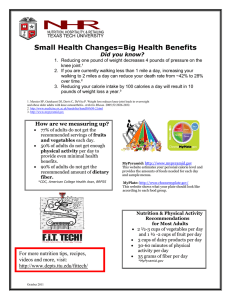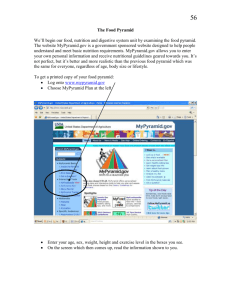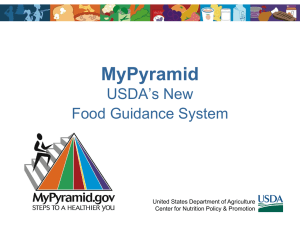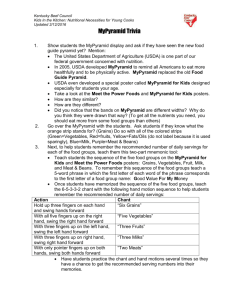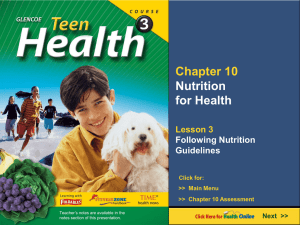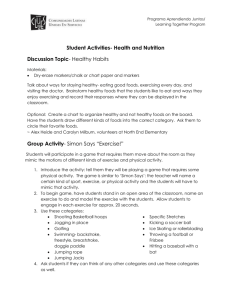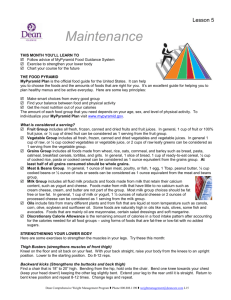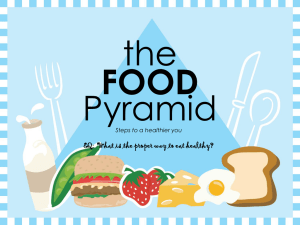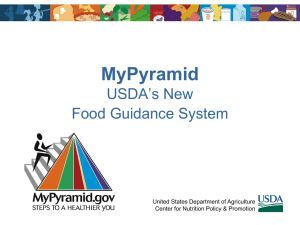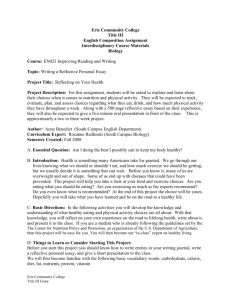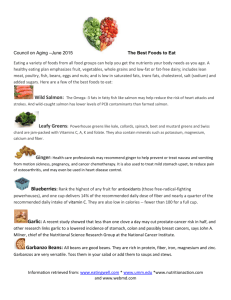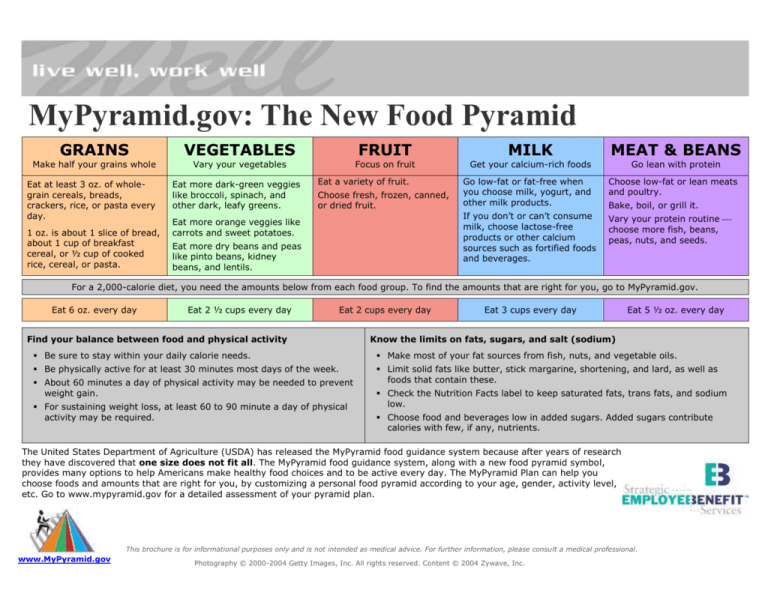
MyPyramid.gov: The New Food Pyramid
GRAINS
VEGETABLES
FRUIT
MILK
MEAT & BEANS
Make half your grains whole
Vary your vegetables
Focus on fruit
Get your calcium-rich foods
Go lean with protein
Eat at least 3 oz. of wholegrain cereals, breads,
crackers, rice, or pasta every
day.
1 oz. is about 1 slice of bread,
about 1 cup of breakfast
cereal, or ½ cup of cooked
rice, cereal, or pasta.
Eat more dark-green veggies
like broccoli, spinach, and
other dark, leafy greens.
Eat a variety of fruit.
Choose fresh, frozen, canned,
or dried fruit.
Eat more orange veggies like
carrots and sweet potatoes.
Eat more dry beans and peas
like pinto beans, kidney
beans, and lentils.
Go low-fat or fat-free when
you choose milk, yogurt, and
other milk products.
Choose low-fat or lean meats
and poultry.
If you don’t or can’t consume
milk, choose lactose-free
products or other calcium
sources such as fortified foods
and beverages.
Vary your protein routine
choose more fish, beans,
peas, nuts, and seeds.
Bake, boil, or grill it.
For a 2,000-calorie diet, you need the amounts below from each food group. To find the amounts that are right for you, go to MyPyramid.gov.
Eat 6 oz. every day
Eat 2 ½ cups every day
Eat 2 cups every day
Find your balance between food and physical activity
Eat 3 cups every day
Eat 5 ½ oz. every day
Know the limits on fats, sugars, and salt (sodium)
Be sure to stay within your daily calorie needs.
Make most of your fat sources from fish, nuts, and vegetable oils.
Be physically active for at least 30 minutes most days of the week.
Limit solid fats like butter, stick margarine, shortening, and lard, as well as
foods that contain these.
About 60 minutes a day of physical activity may be needed to prevent
weight gain.
For sustaining weight loss, at least 60 to 90 minute a day of physical
activity may be required.
Check the Nutrition Facts label to keep saturated fats, trans fats, and sodium
low.
Choose food and beverages low in added sugars. Added sugars contribute
calories with few, if any, nutrients.
The United States Department of Agriculture (USDA) has released the MyPyramid food guidance system because after years of research
they have discovered that one size does not fit all. The MyPyramid food guidance system, along with a new food pyramid symbol,
provides many options to help Americans make healthy food choices and to be active every day. The MyPyramid Plan can help you
choose foods and amounts that are right for you, by customizing a personal food pyramid according to your age, gender, activity level,
etc. Go to www.mypyramid.gov for a detailed assessment of your pyramid plan.
This brochure is for informational purposes only and is not intended as medical advice. For further information, please consult a medical professional.
www.MyPyramid.gov
Photography © 2000-2004 Getty Images, Inc. All rights reserved. Content © 2004 Zywave, Inc.


